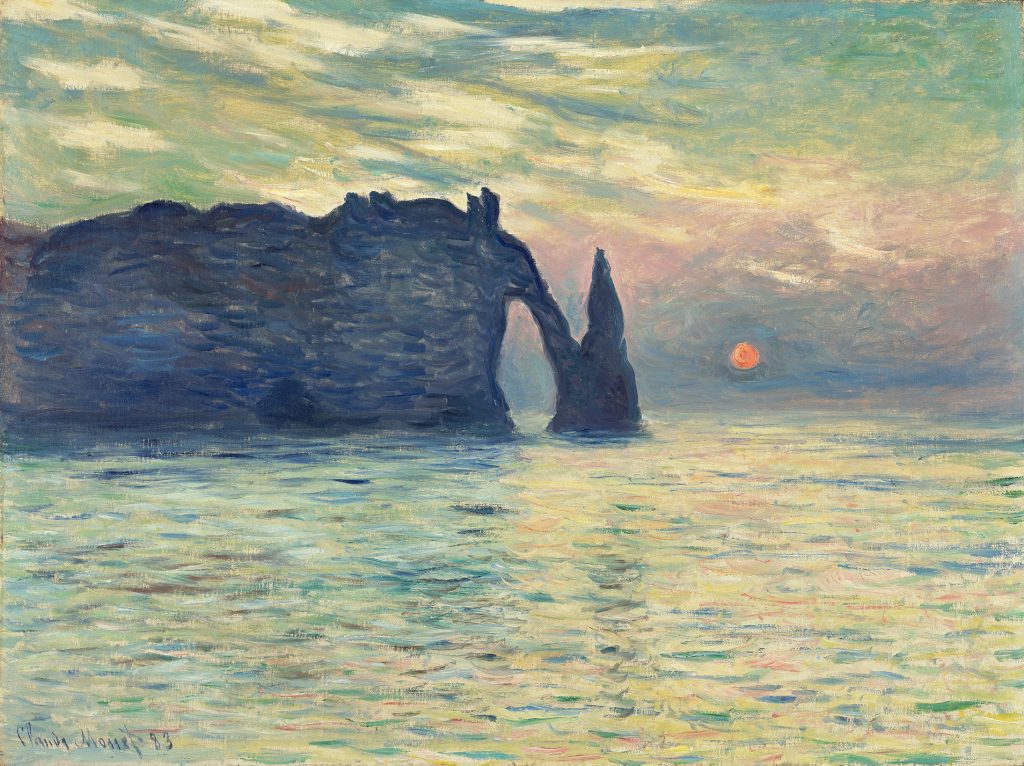The Cliff, Étretat, Sunset (work of art)
Artwork Info
Key Ideas
- Claude Monet grew up in Normandy (a region of northern France), near these cliffs.
- Monet was a French impressionist painter. The impressionists often painted scenes from nature. They were interested in depicting sunlight, its reflection on water, and the movement of water. They also focused on painting the weather conditions in outdoor scenes, including the clouds and the colors of the sky.
- In February 1883 Monet visited Étretat (a resort town on the coast of Normandy) and spent three weeks painting there.
- This painting was created during the rise of the “chemical phase” of the Industrial Revolution. During this time many painters began using brighter colors because more paint pigments became available at a cheaper price.
Learn More
Claude Monet created many paintings of the giant cliffs and rock formations at Étretat. This fishing village and resort is located on the coast of Normandy, in northern France. The Elephant and the Needle (named for their shapes) are the two rock formations featured in this impressionist painting. Impressionism was a 19th-century art movement that began in Paris. Impressionist artists used quick, loose brushstrokes and bright paint colors to create outdoor scenes. They often depicted different weather conditions, the movement of water, and the effects of sunlight at different times of day.
In this painting Monet applied bright paint colors to his canvas using quick, individual brushstrokes. This created the appearance of motion on the water’s surface. To create the setting sun, he added one paint color on top of another while it was still wet. The result was partially mixed paint. This would have been a new and unusual painting technique in Monet’s time.
Monet wrote to his fiancé, Alice, almost daily during the three weeks he spent painting at Étretat. His letters to her describe the impressive cliffs and the challenges of painting in February weather and rocky terrain. Throughout his stay he set up his painting equipment outdoors and made draft paintings to finish later in his studio. He started at least 18 paintings of Étretat during his visit.
The French impressionists saw a dramatic change in paint materials during their lifetime. More than 20 new paint pigments were invented during the Industrial Revolution. The new field of chemistry made it possible to buy a variety of paint colors at affordable prices. Many artists began using brighter colors in their work.
tags: clouds, time, sensory
Additional Resources
Resources for Teachers:
- Explore a sunset-themed art lesson inspired by Monet’s work.
- Watch a video about the impressionists’s revolution in paint.
- Watch a video about Monet’s personal and artistic development.
Resources for Students:
- Watch a video about another painting by Monet.
- Explore art and writing activities inspired by Monet’s view of the cliff at Étretat.
- Read a short article about impressionism.

